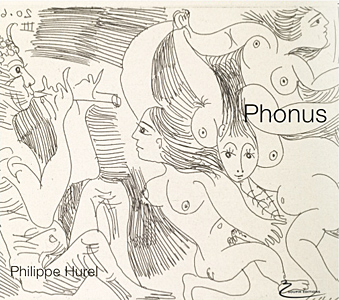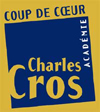


 « Comme son disque précédent, Loops, nous l'avait joliment enseigné, Philippe Hurel (né en 1955) peaufine avec le temps un style invitant à aller au-delà des apparences. Les deux oeuvres les plus anciennes de ce CD se livrent pourtant dans l'immédiat : l'octuor Figures libres, impressionnant dans les registres du rythme et du timbre, s'apparente à une suite de pièces de bravoure, tout comme les Variations pour percussion et ensemble, mais avec moins de maîtrise. Phonus ou la voix du faune, pour flûte et orchestre, affiche en revanche une remarquable qualité d'extension (notamment face à la référence debussyste du Prélude à l'après-midi d'un faune) et manifeste l'évolution de plus en plus personnelle du compositeur..
« Comme son disque précédent, Loops, nous l'avait joliment enseigné, Philippe Hurel (né en 1955) peaufine avec le temps un style invitant à aller au-delà des apparences. Les deux oeuvres les plus anciennes de ce CD se livrent pourtant dans l'immédiat : l'octuor Figures libres, impressionnant dans les registres du rythme et du timbre, s'apparente à une suite de pièces de bravoure, tout comme les Variations pour percussion et ensemble, mais avec moins de maîtrise. Phonus ou la voix du faune, pour flûte et orchestre, affiche en revanche une remarquable qualité d'extension (notamment face à la référence debussyste du Prélude à l'après-midi d'un faune) et manifeste l'évolution de plus en plus personnelle du compositeur..
Pierre Gervasoni - Le Monde 05/2009
 « Doit-on s’étonner que la flûte du Faune de Debussy – que d’aucuns considèrent comme le premier compositeur spectral du XXe siècle – ait fini par titiller le désir de Philippe Hurel même si le risque du plagiat l’avait jusque-là fait renoncer aux modèles du passé. S’il s’en approche de très près – l’œuvre est axée sur les deux cellules génératrices du thème debussyste – Phonus (2004) pour flûte et orchestre, sorti du laboratoire sonore du compositeur, fait naître, comme par germination, un univers aux contours authentiquement « hureliens », gorgé d’énergie pulsionnelle, où la fragilité et la sensualité premières sont soumises à l’épreuve de son geste pugnace. Sur fond spectral et sans rien perdre de sa plasticité, « la voix du faune » – prodigieux Benoît Fromanger – se plie aux dérives rythmiques et aux délires virtuoses du compositeur, dans une jubilation de timbre quasi hypnotique qui galvanise l’écoute. La captation live du concert d’Oslo ne pouvait mieux servir la fibre vivante du son de Philippe Hurel.
« Doit-on s’étonner que la flûte du Faune de Debussy – que d’aucuns considèrent comme le premier compositeur spectral du XXe siècle – ait fini par titiller le désir de Philippe Hurel même si le risque du plagiat l’avait jusque-là fait renoncer aux modèles du passé. S’il s’en approche de très près – l’œuvre est axée sur les deux cellules génératrices du thème debussyste – Phonus (2004) pour flûte et orchestre, sorti du laboratoire sonore du compositeur, fait naître, comme par germination, un univers aux contours authentiquement « hureliens », gorgé d’énergie pulsionnelle, où la fragilité et la sensualité premières sont soumises à l’épreuve de son geste pugnace. Sur fond spectral et sans rien perdre de sa plasticité, « la voix du faune » – prodigieux Benoît Fromanger – se plie aux dérives rythmiques et aux délires virtuoses du compositeur, dans une jubilation de timbre quasi hypnotique qui galvanise l’écoute. La captation live du concert d’Oslo ne pouvait mieux servir la fibre vivante du son de Philippe Hurel.
Cette vitalité sonore puisée aux sources du jazz et l’intensité des timbres qui projettent leur éclat s’exercent également dans le triptyque au titre quasi sportif de Figures libres (2001) dont la ferme conduite structurelle donne au propos toute sa pertinence. L’interprétation très engagée de Pierre-André Valade à la tête de l’Ensemble Court-Circuit en souligne l’élégante cambrure.
Dans Quatre variations pour percussion et ensemble (1999-2000) qui referment cet album, Hurel s’attache à l’un de ses instruments de prédilection, le vibraphone. La rigueur formelle – pointée dans le titre – se pare d’un charme instrumental doublé d’une remarquable prise de son qui restitue pleinement l’espace polyphonique et la richesse des composantes du timbre.
Michèle Tosi - ResMusica 06/2009
The flute concerto Phonus was commissioned for the Ultima Festival in Oslo, and this recording is the live recording of the premiere. An atmospheric opening introduces Hurel's spectral style of harmonic writing, with some interesting evolving textures. The soloist is surrounded by the sound of the orchestra. An extended cadenza follows, which makes use of numerous contemporary techniques and is an impressive virtuoso display. Flute player Benoît Fromanger plays with the utmost technical control and delivers an exciting and communicative performance. A second cadenza, which also uses the orchestra's flute section, is also highly engaging and forms one of the work's highlights. The composition's subtitle, La voix du Faune makes reference to the influence of Debussy's famous orchestral prelude, with its celebrated opening flute solo, on which Hurel bases his material. Hurel's work has a sense of challenge about it, in terms of its technical demands for the soloist. It gives a fascinating modern perspective on Debussy's music, which permeates this work at every level. There is a sense of risk-taking in the performance, providing an appealing sense of drama, and the playing is always highly convincing, from both the soloist and the orchestra.
Figures libres, for eight players, was written in 2001 and commissioned by Ensemble Recherche. The opening possesses a Stravinskian rhythmic drive, with cells used as the basis of the work until the players gain freedom, one by one. Virtuosity once again pervades the music, and combinations of contrapuntal and monophonic material give variety to the textures. With three distinct sections, the music builds in momentum before a sudden change of mood. The central section is slower and less frenetic, with canons emerging between the parts. The final section regains the energy of the opening, with repeated cells once again featuring, and strongly defined rhythmic patterns maintaining the music's momentum. Ensemble Court-Circuit give a virtuosic and impressive performance.
The final work on the disc is Quatre Variations for percussion and chamber orchestra. The variations of the title refer to structural and musical parameters rather than a theme as such; for example, changes are made to interval, rhythms and tempi. The solo vibraphone gives a wonderful sense of colour, which is balanced well with Hurel's imaginative orchestration. Despite the complex structural elements which underlie this work, there is a sense of wit and a lightness of touch which is highly appealing. Gentle jazz influences can be detected, especially in the solo line, and tributes to Grisey and Messiaen also form part of the music's material.
Hurel's music is intelligently constructed and has a sense of unity between all its aspects: orchestration, melody, harmony and structure. There is a strong sense of character in his music and it has much to offer on multiple hearings. The ensembles here are excellent and provide performances of a high quality. The soloists, Benoît Fromanger and Matthew Ward, are both dazzling and play with impressive virtuosity and musicianship.
Carla Rees - MusicWeb international